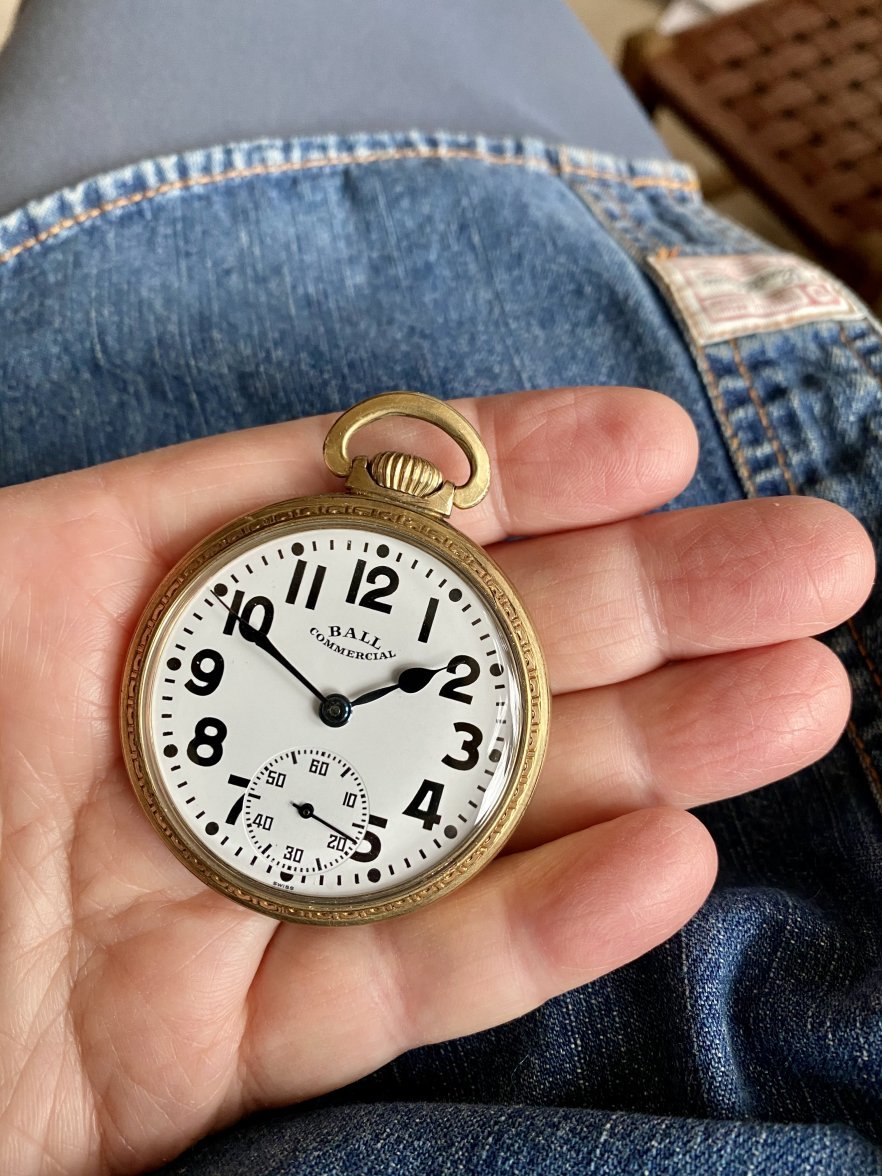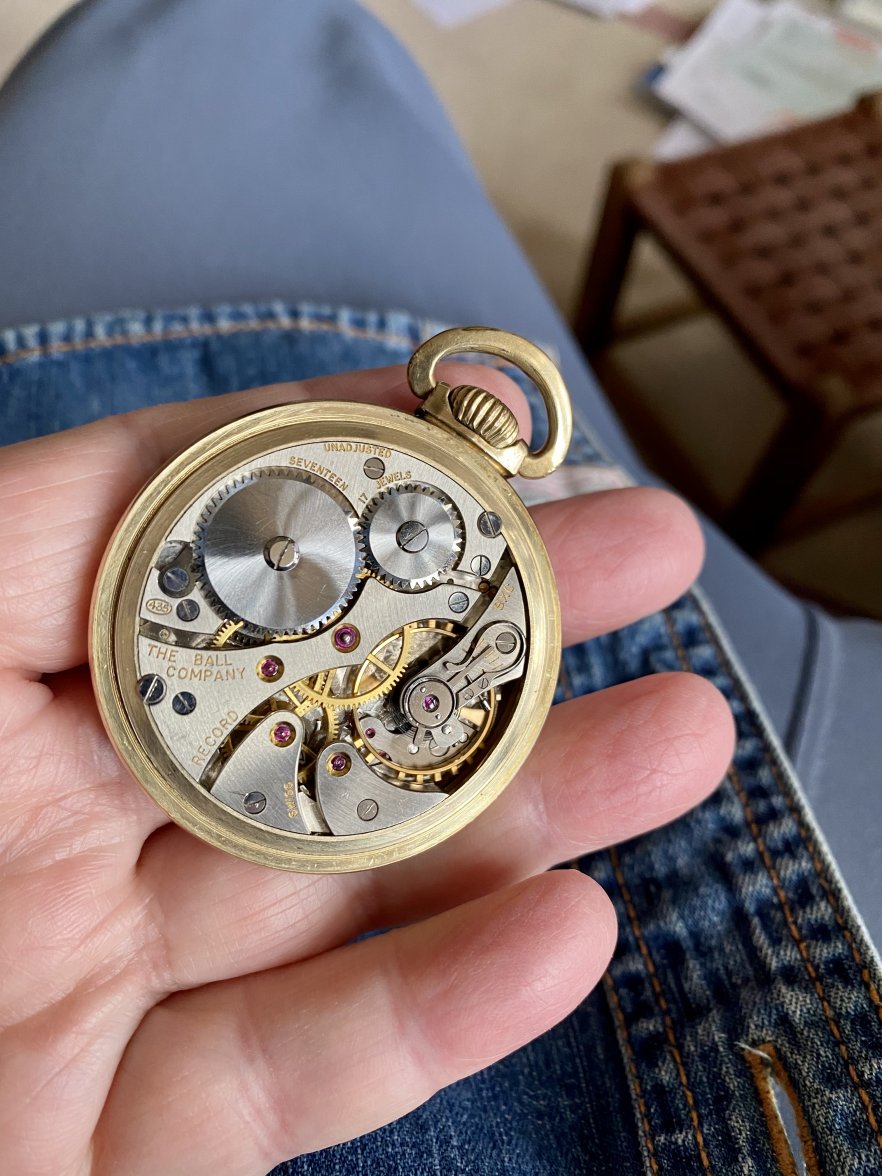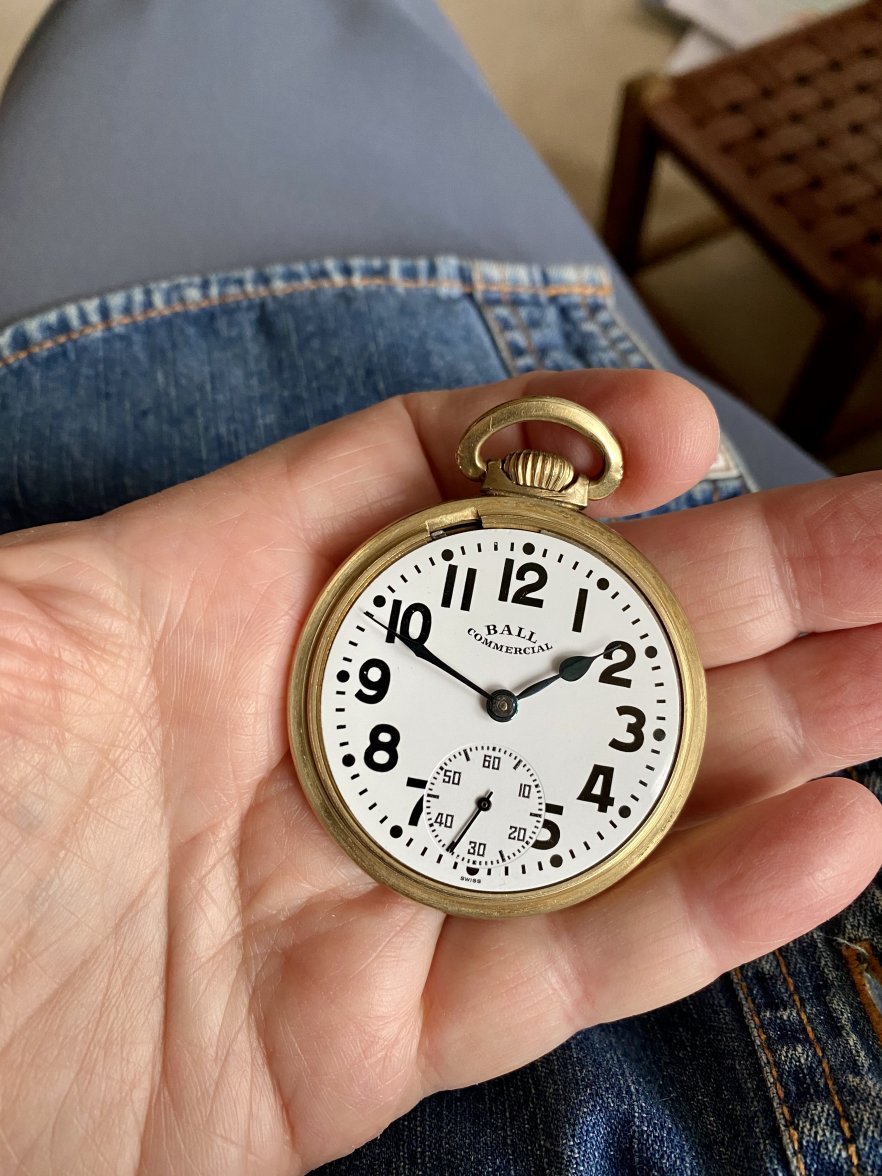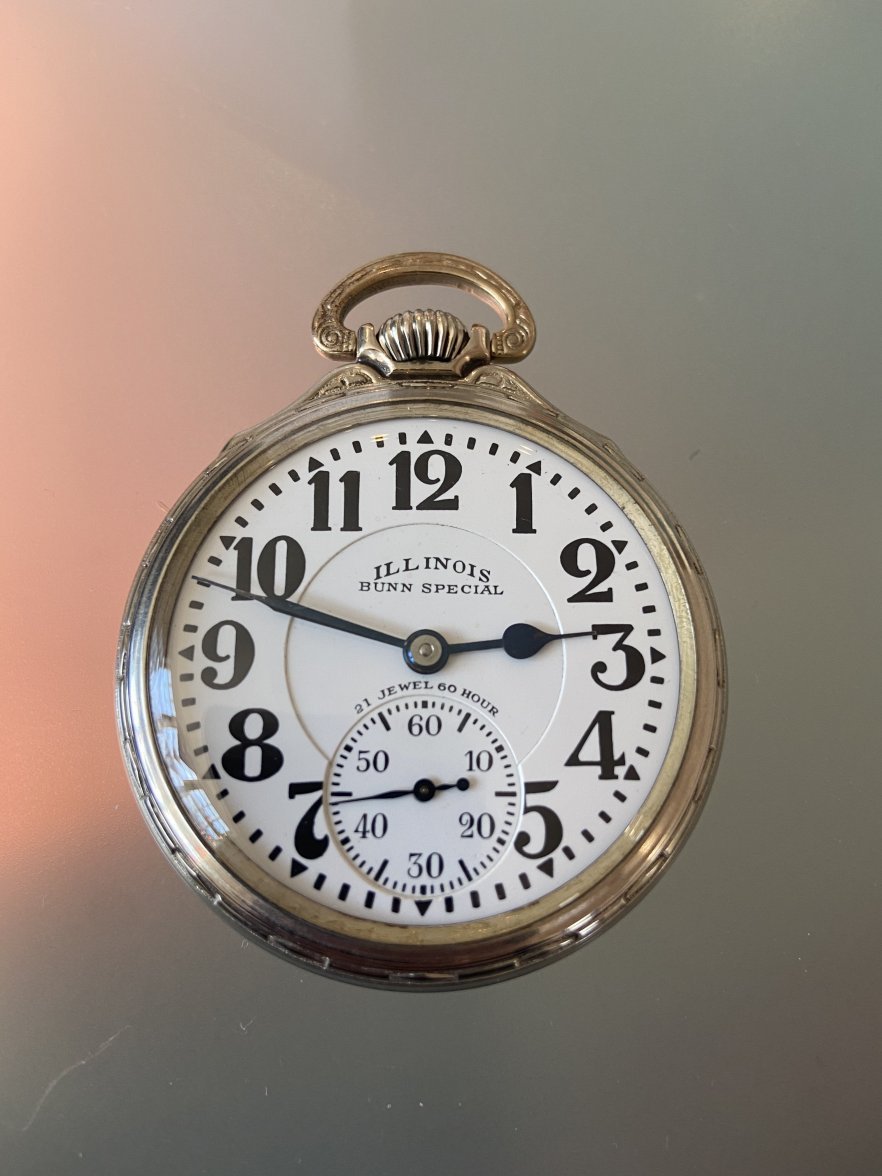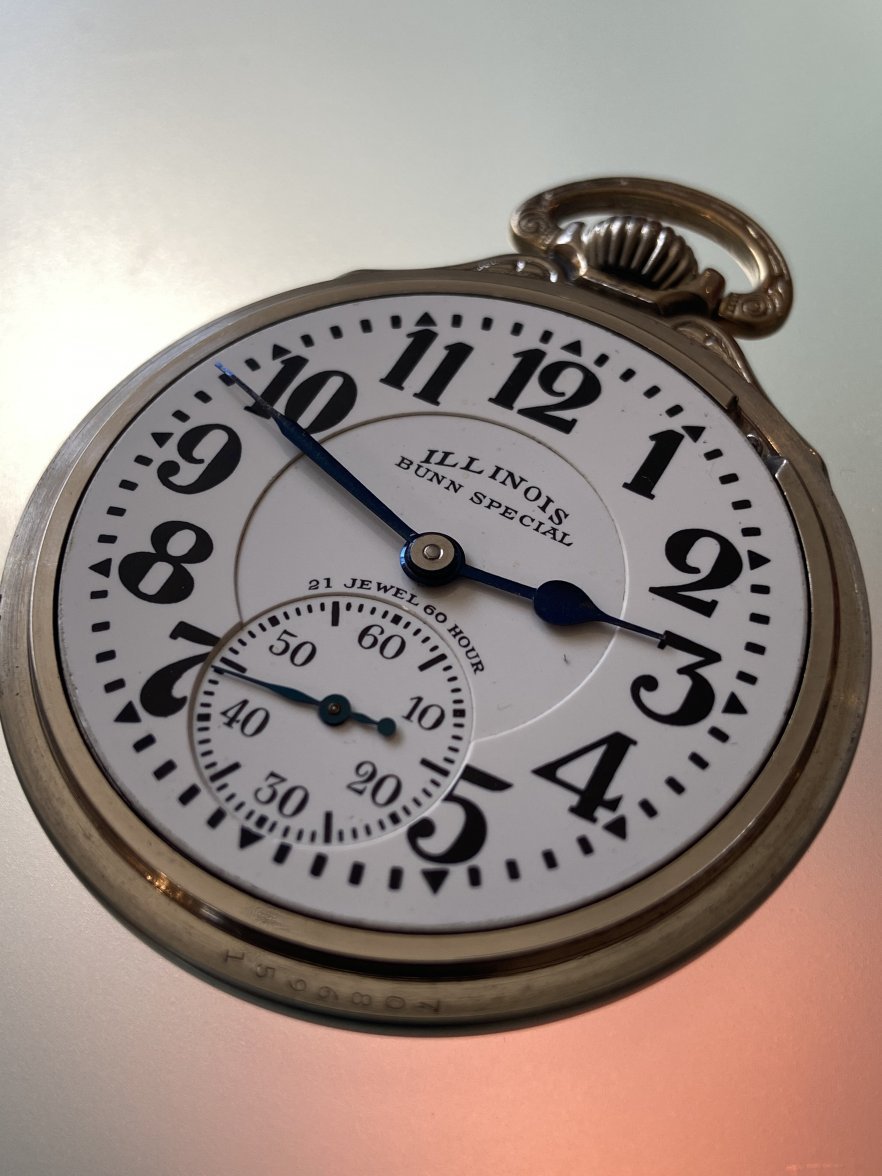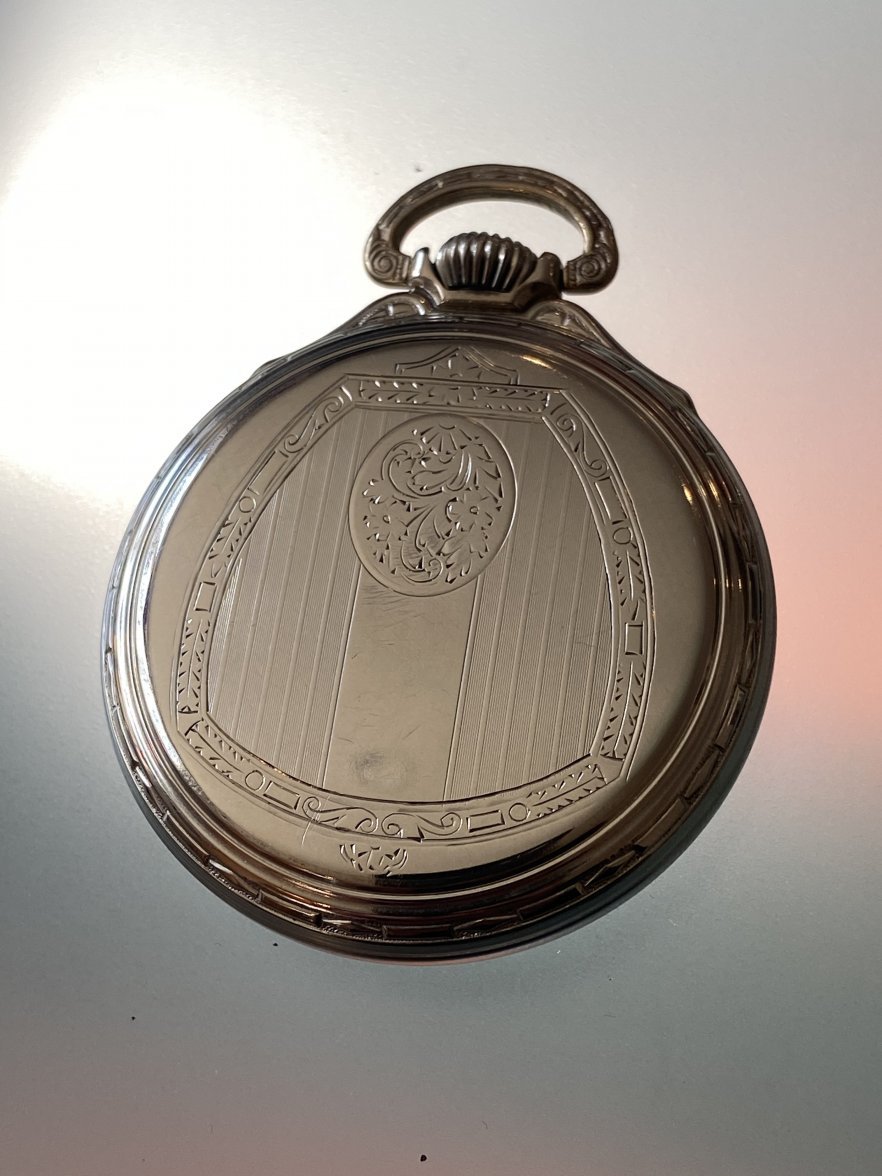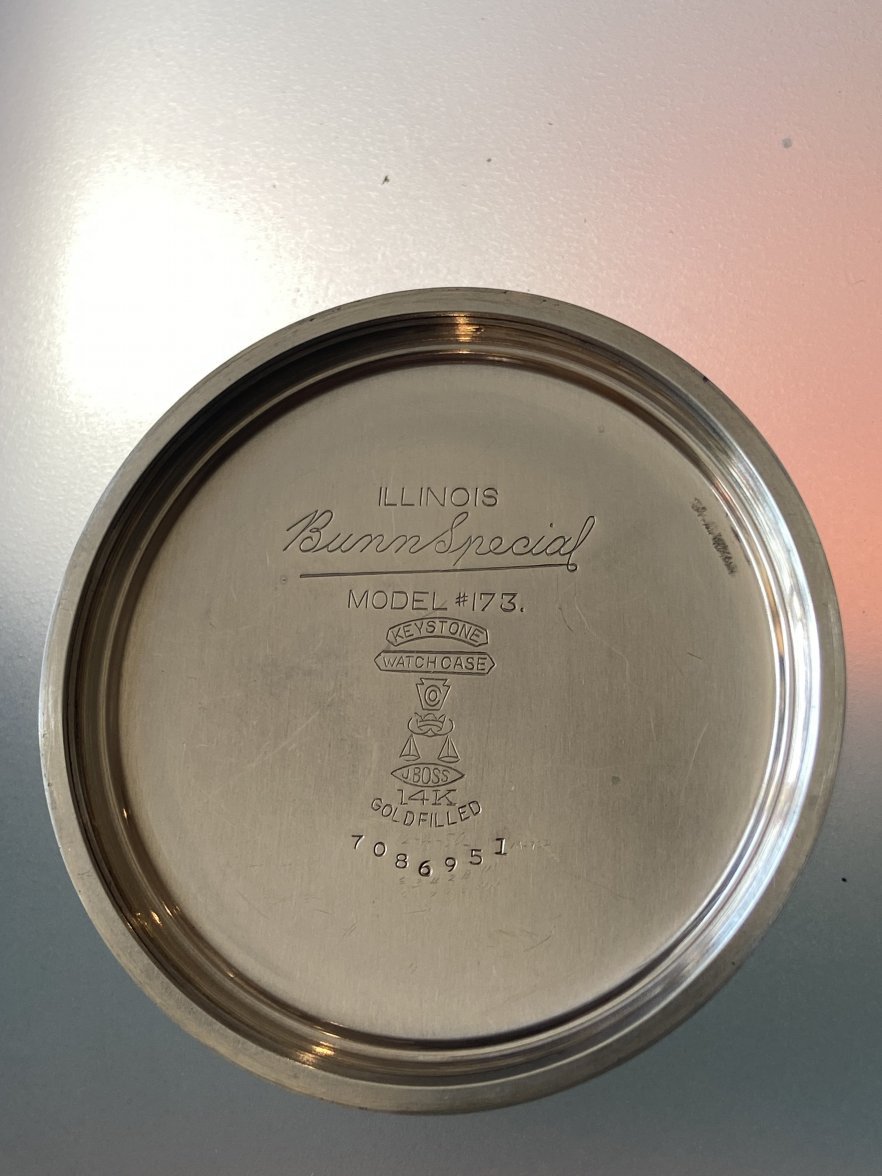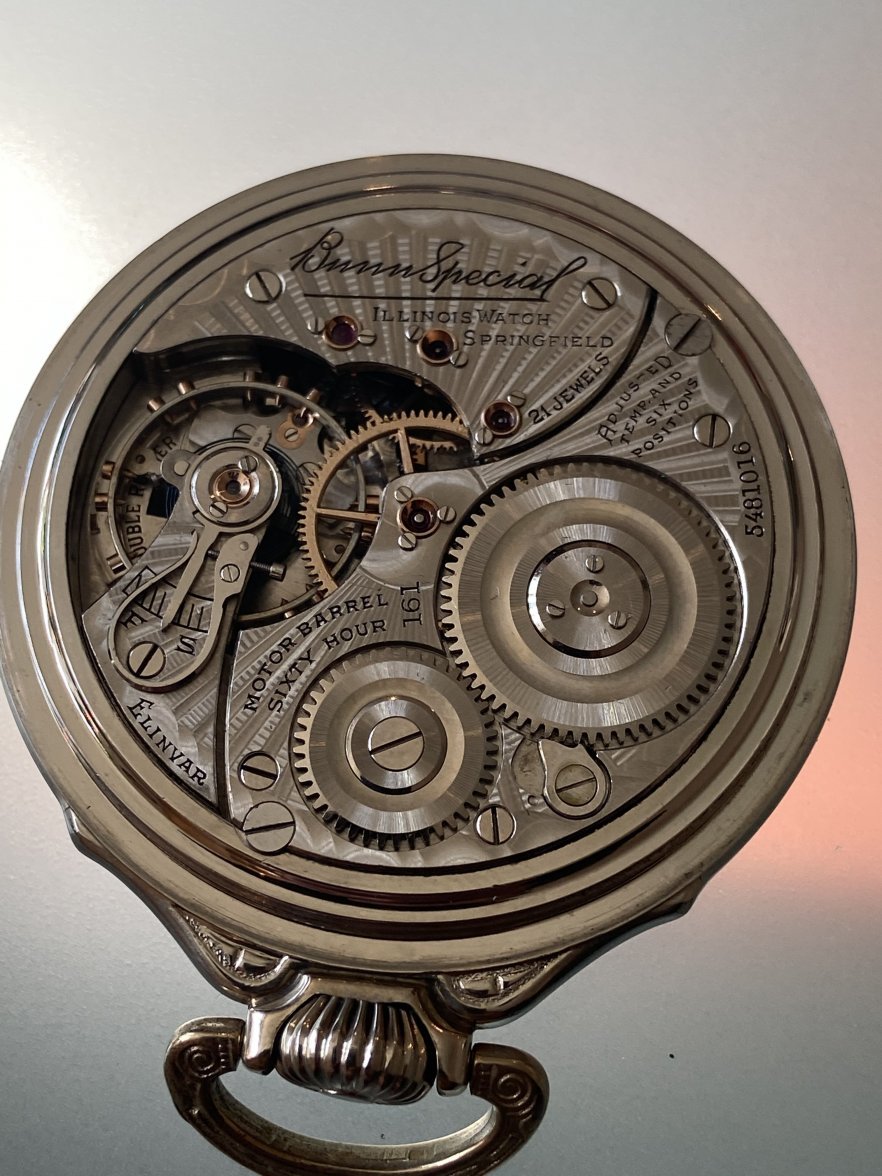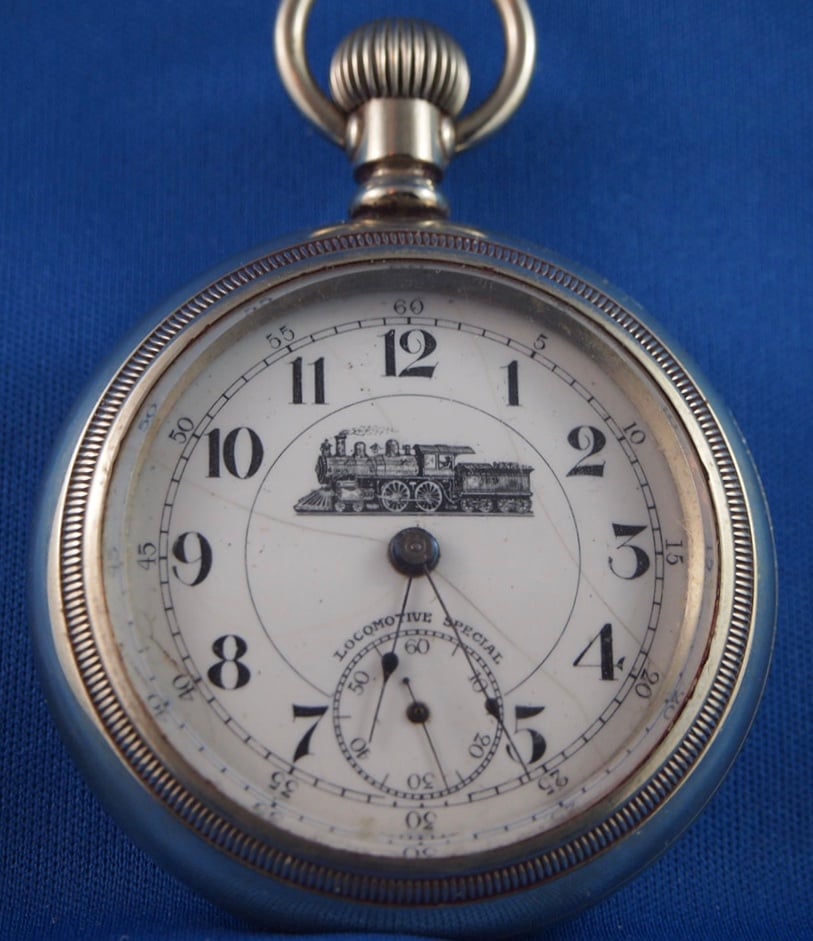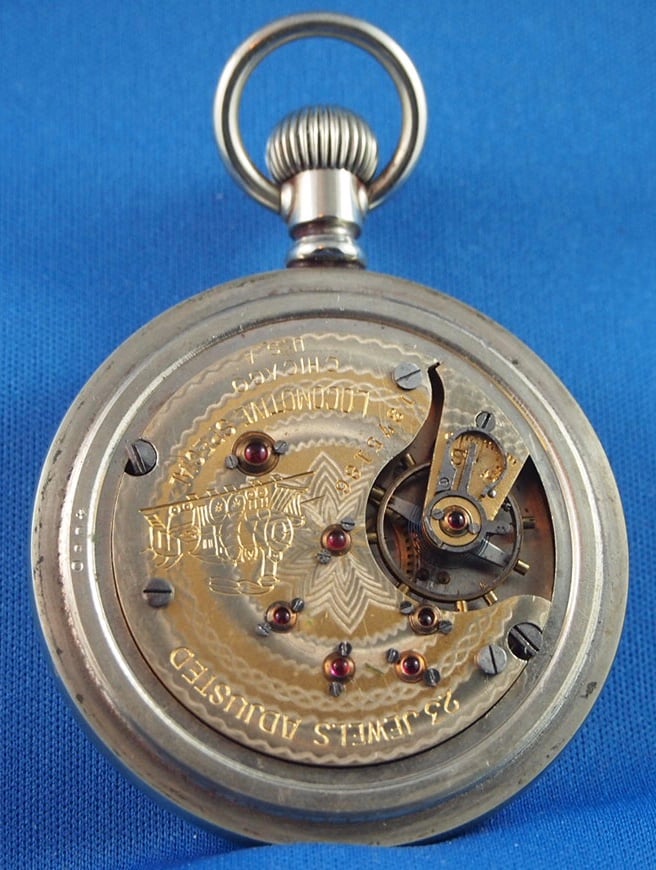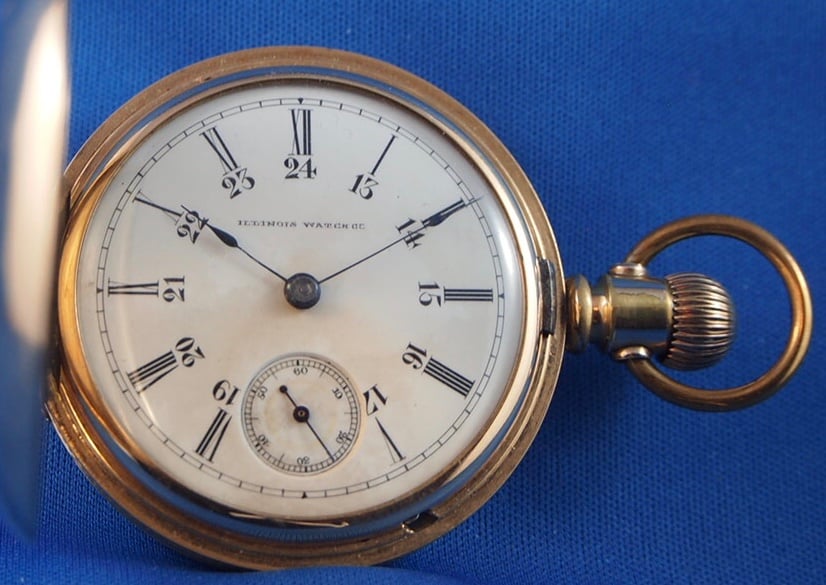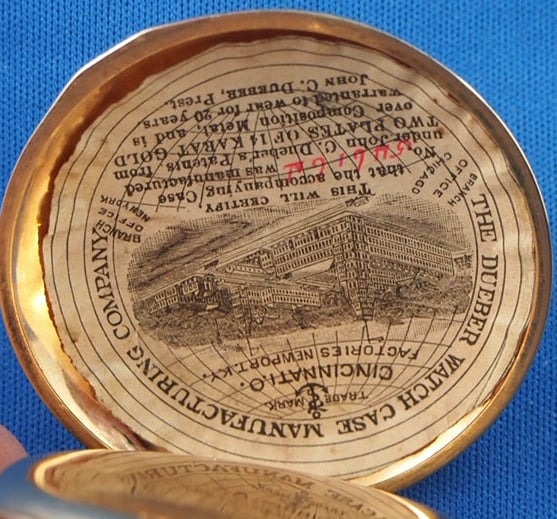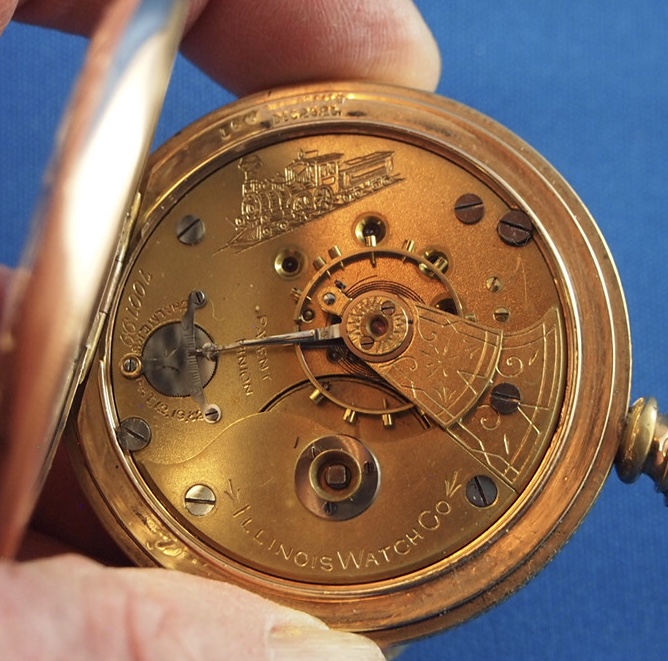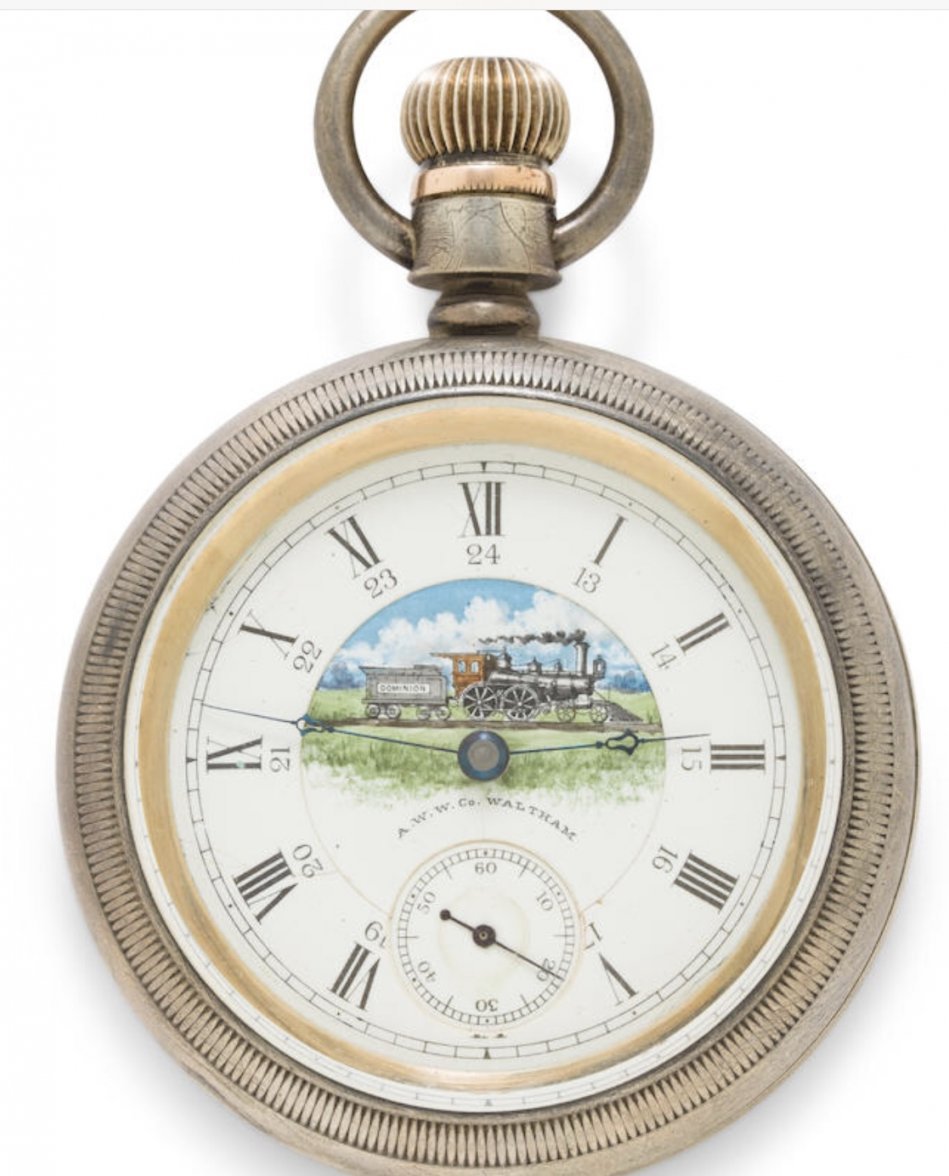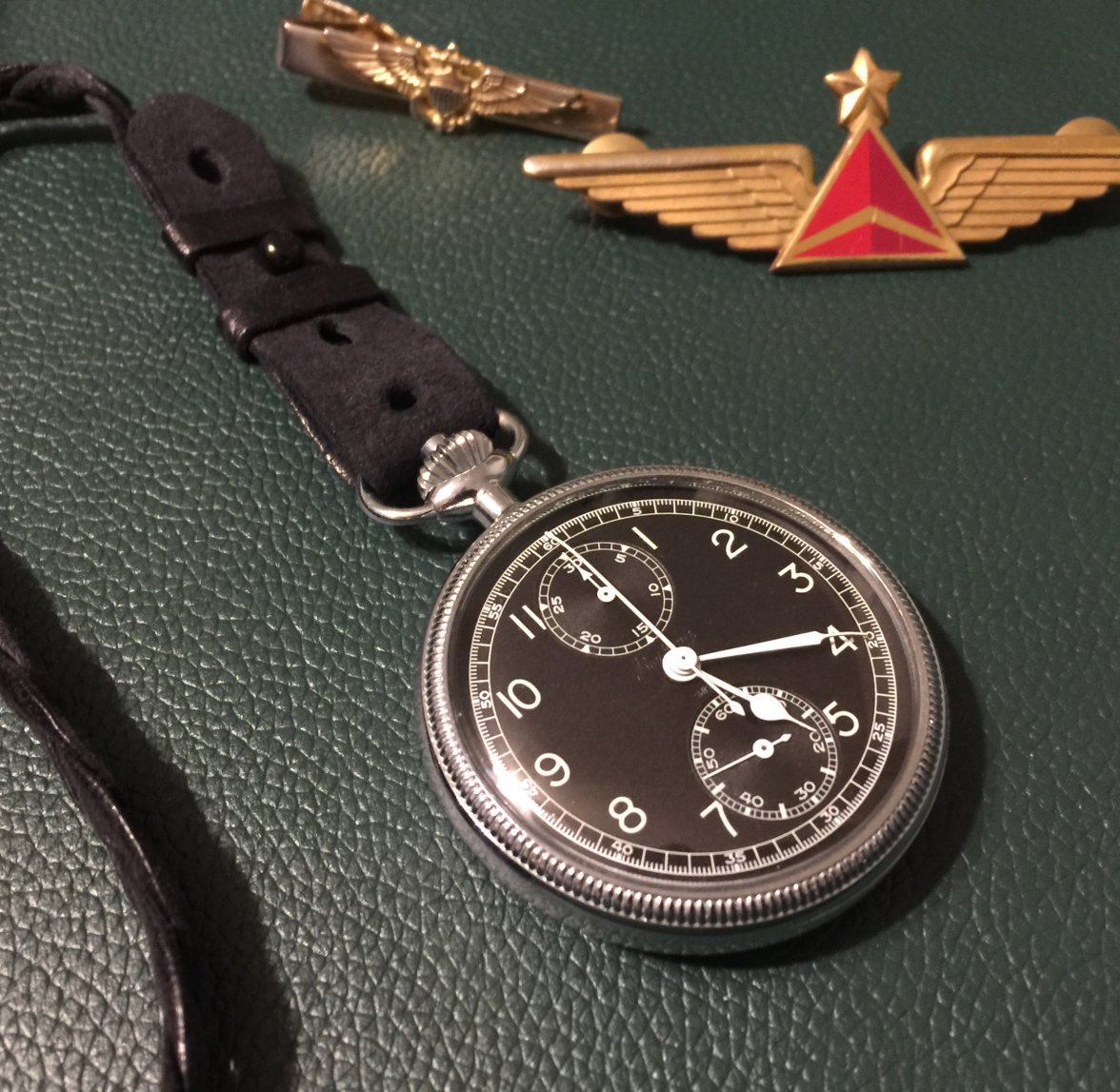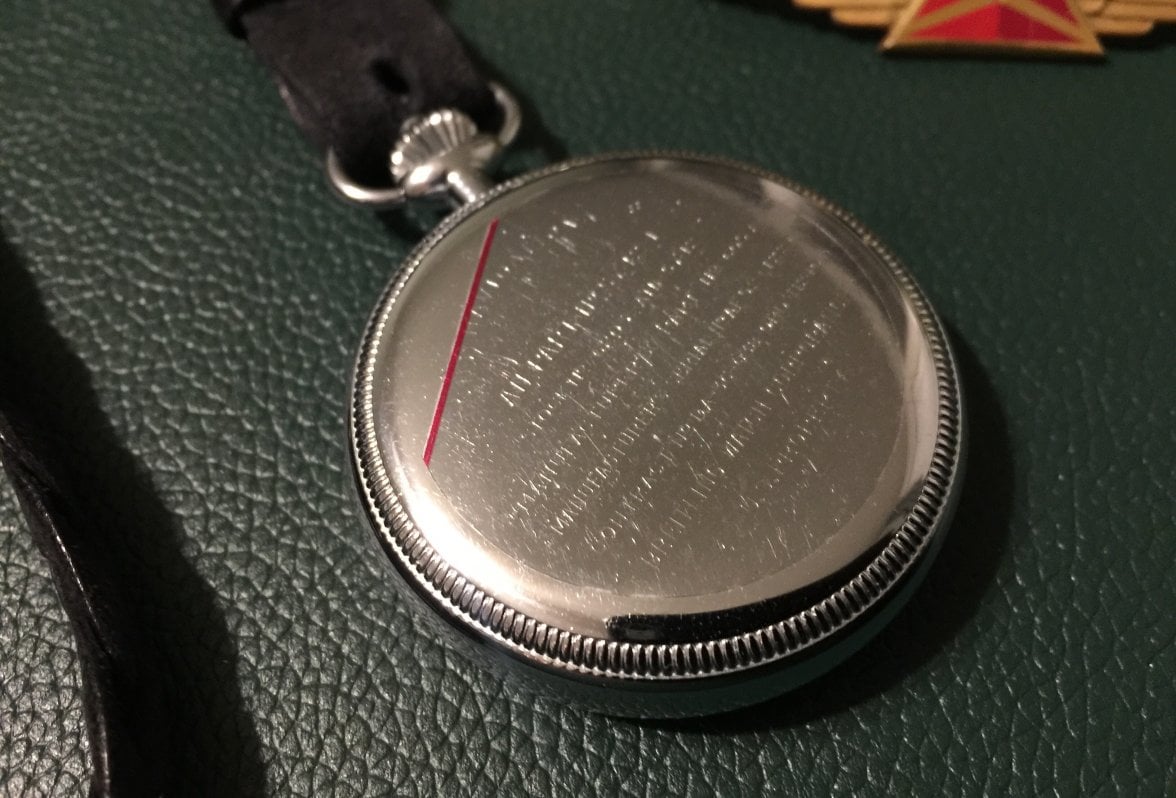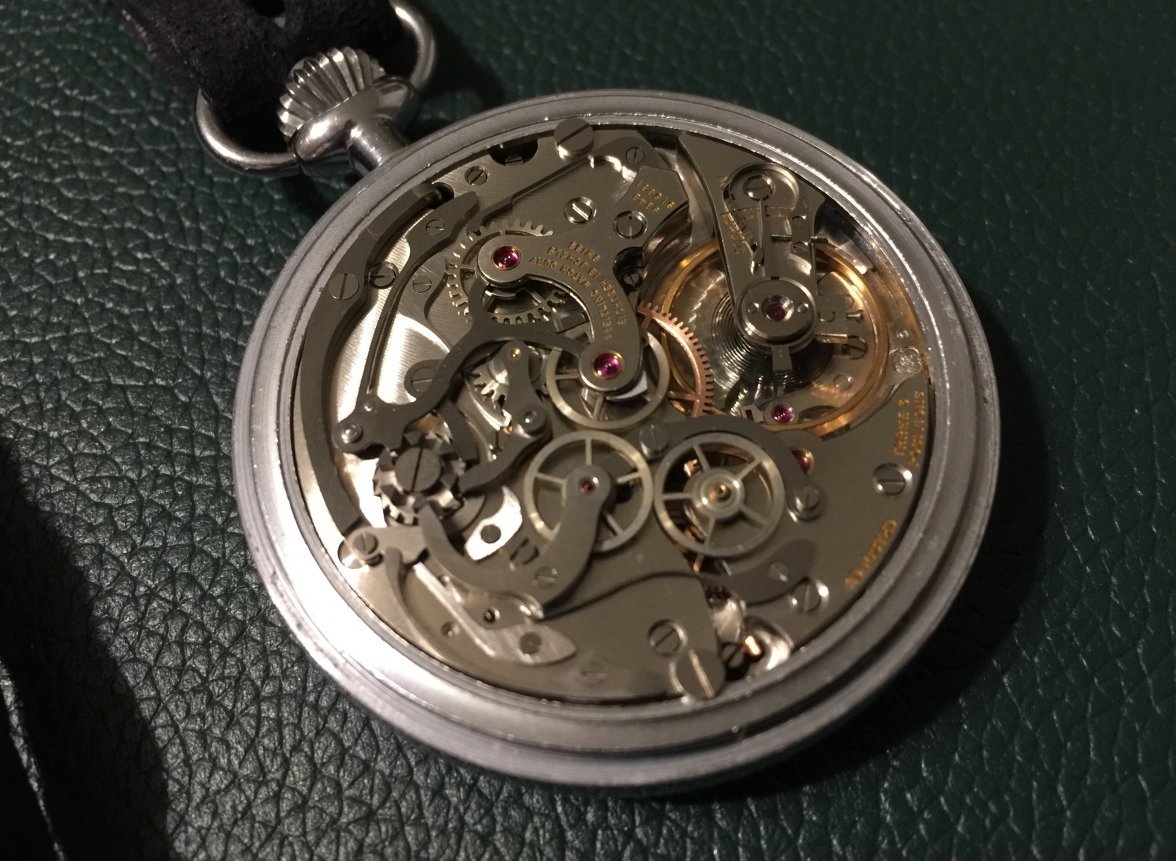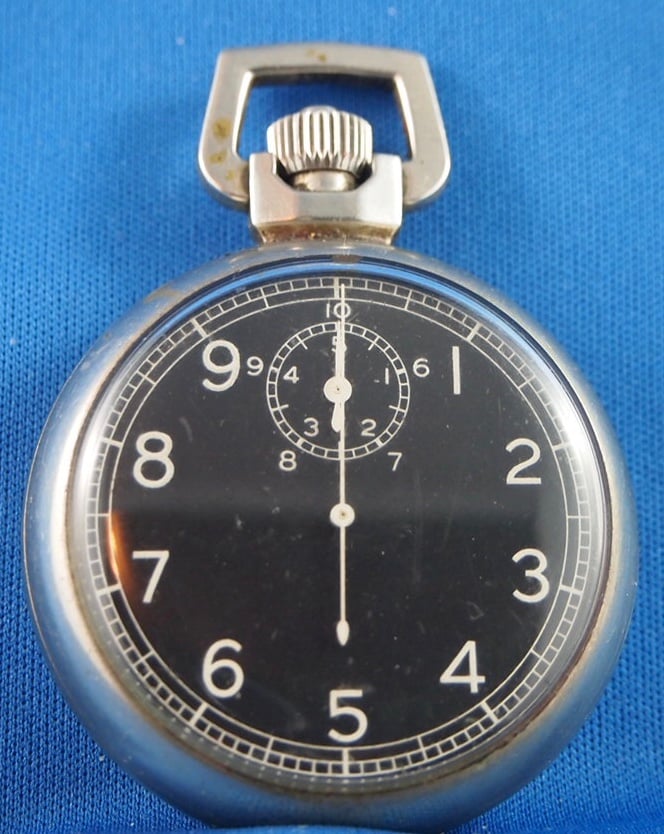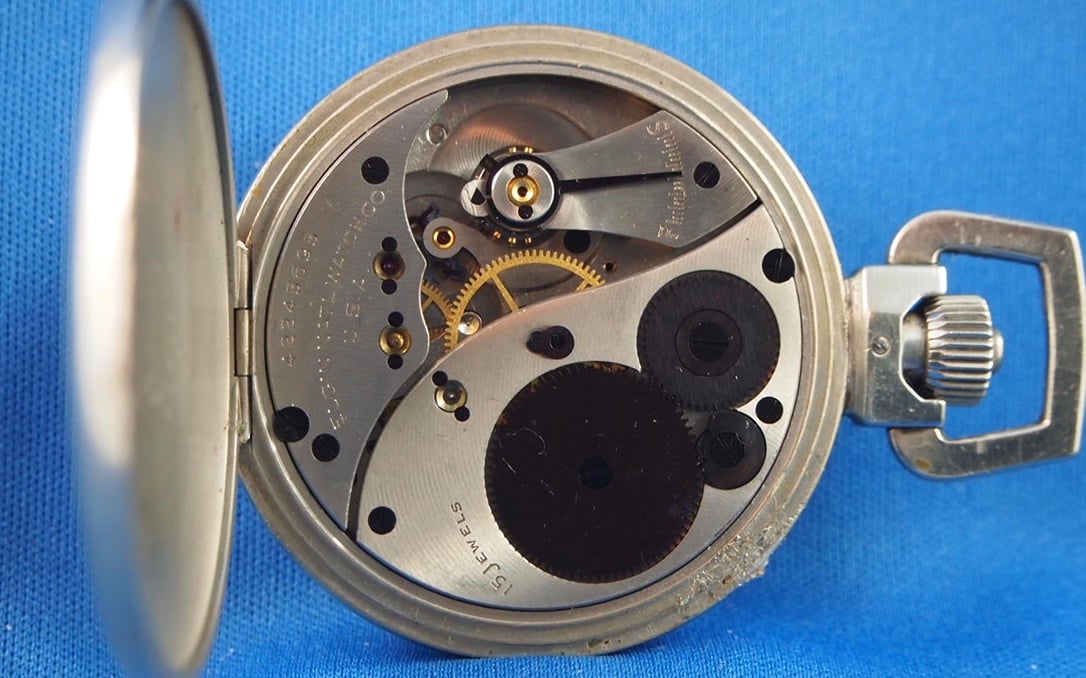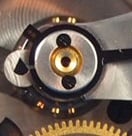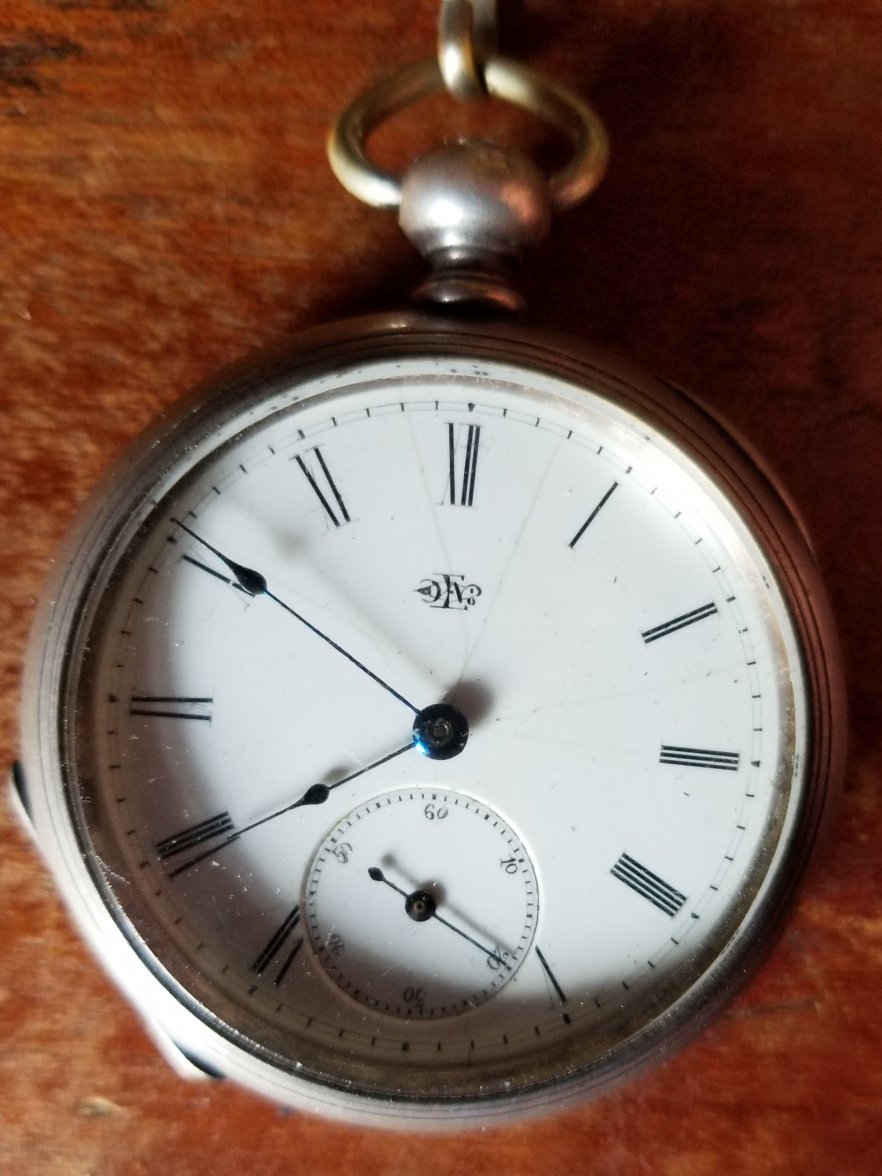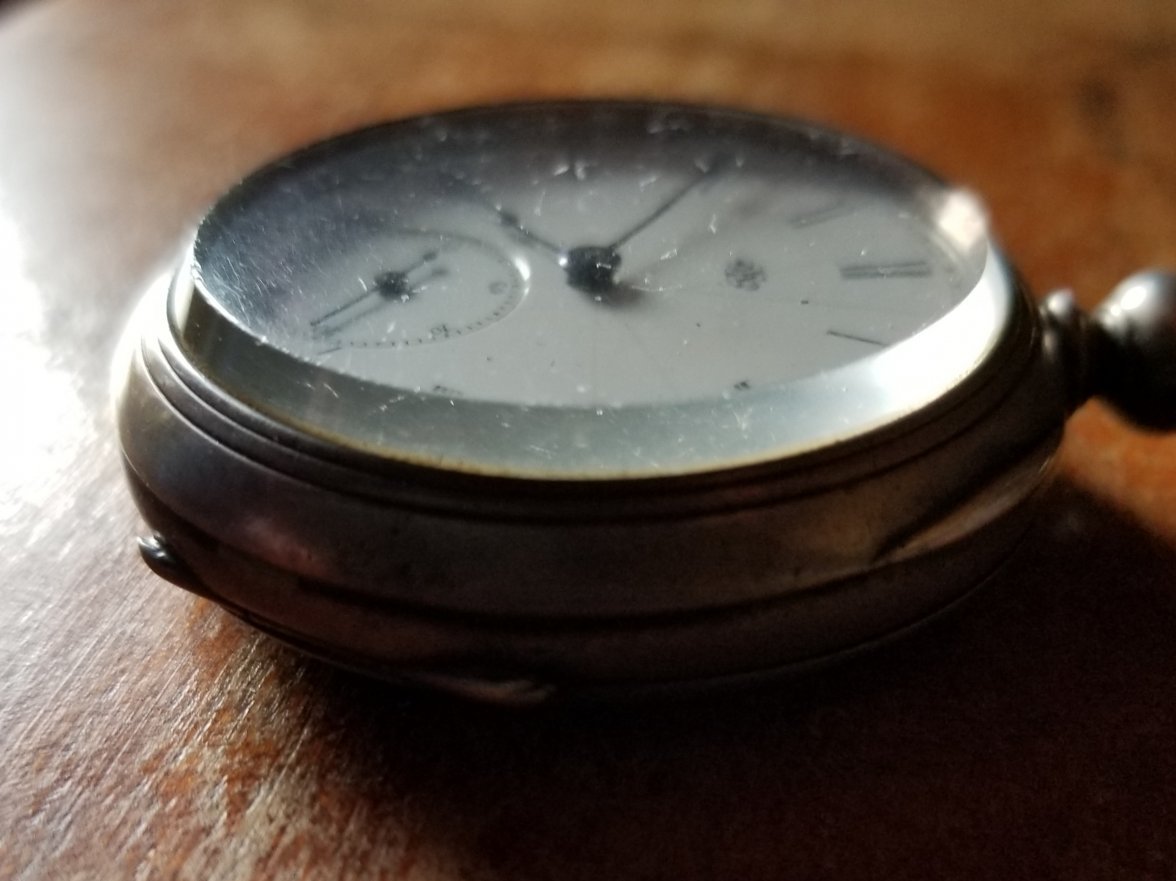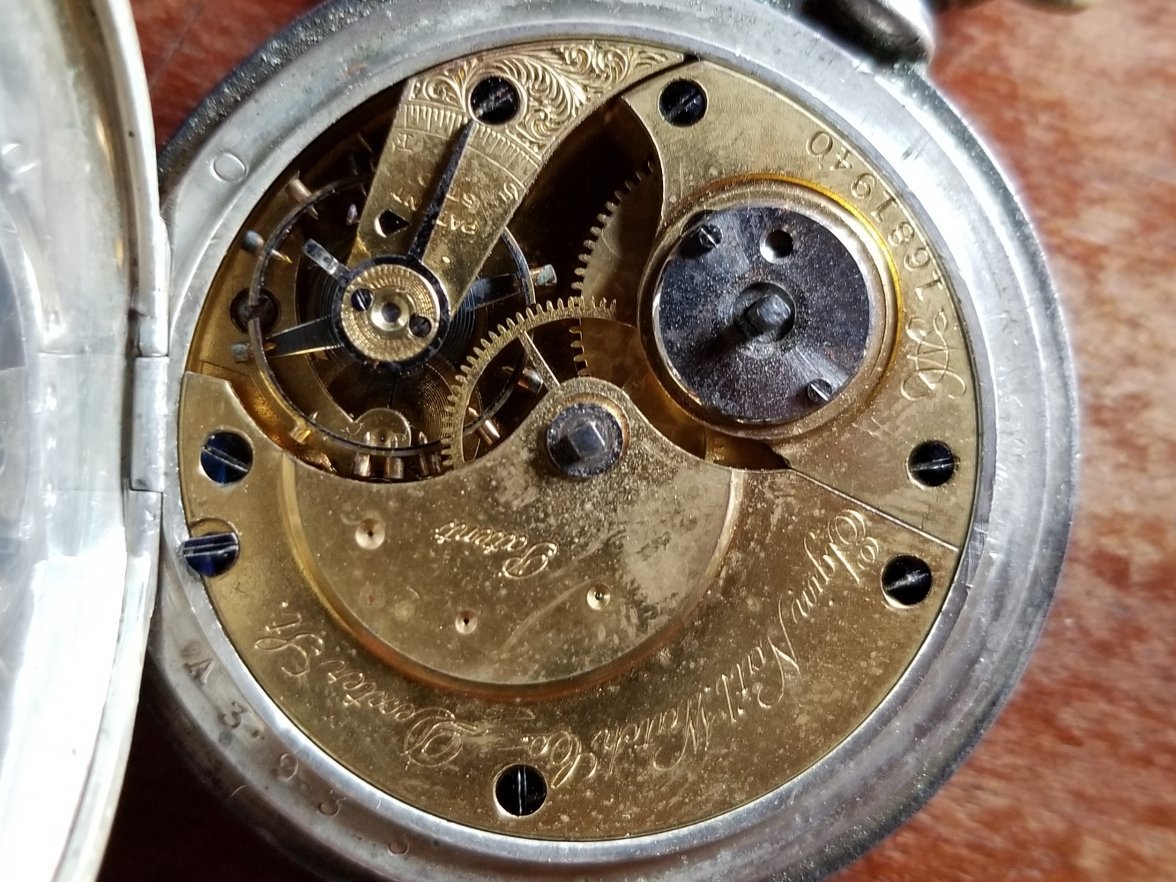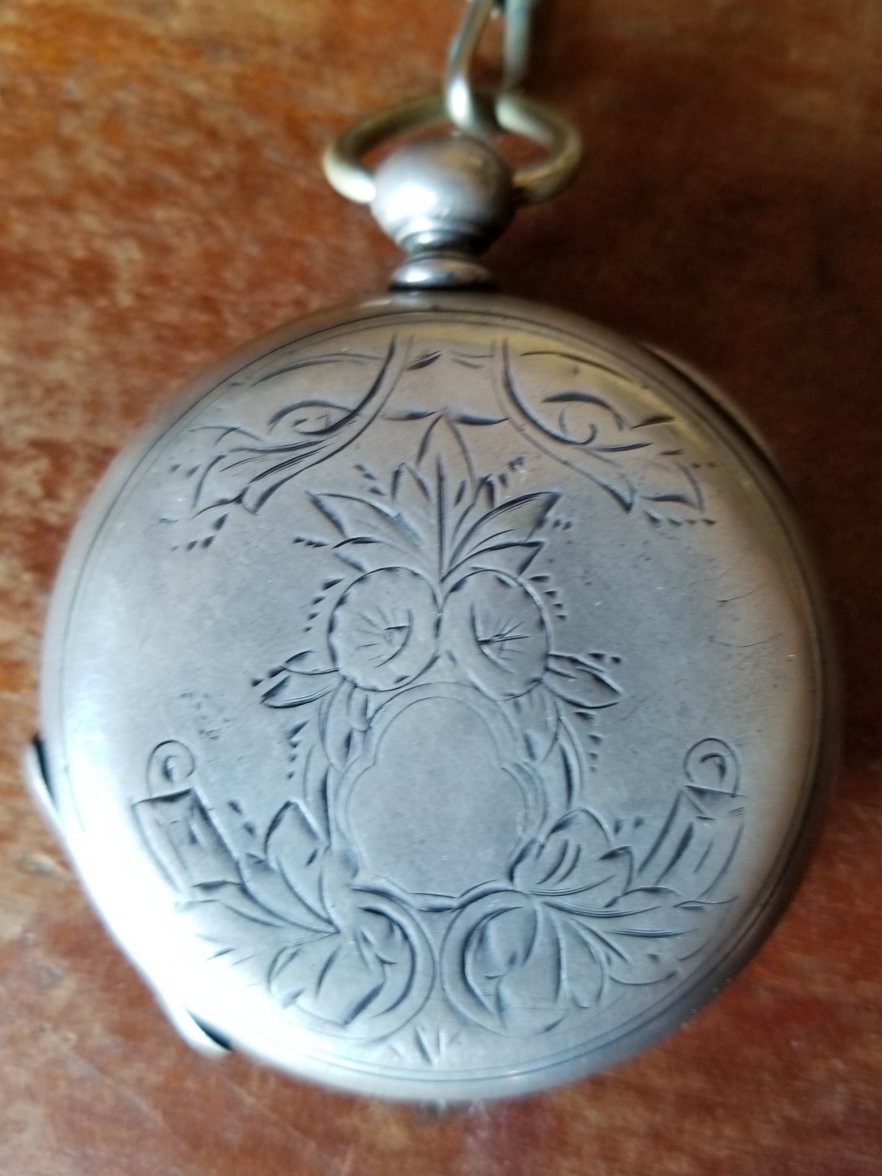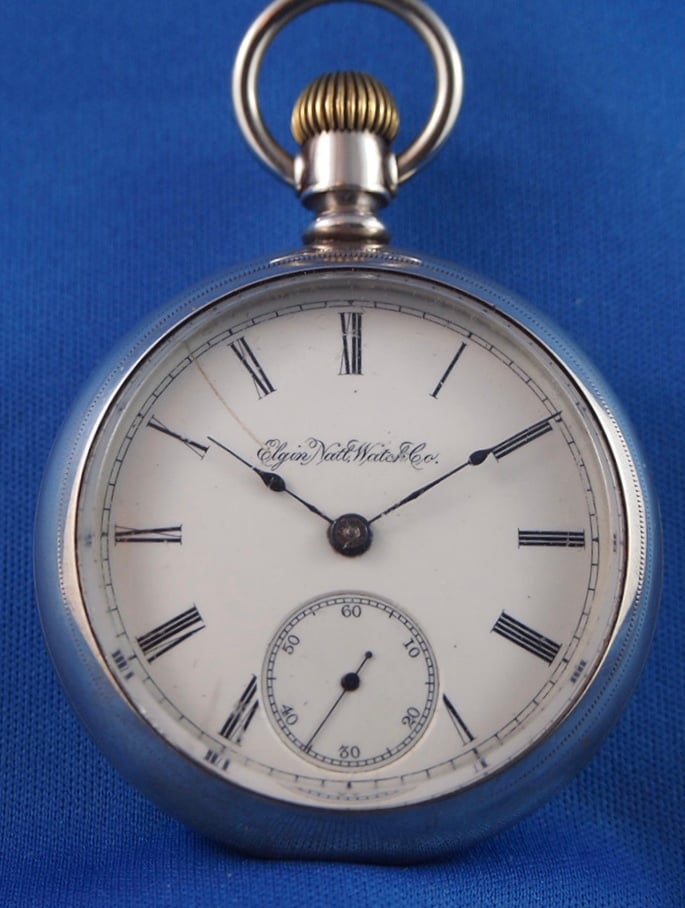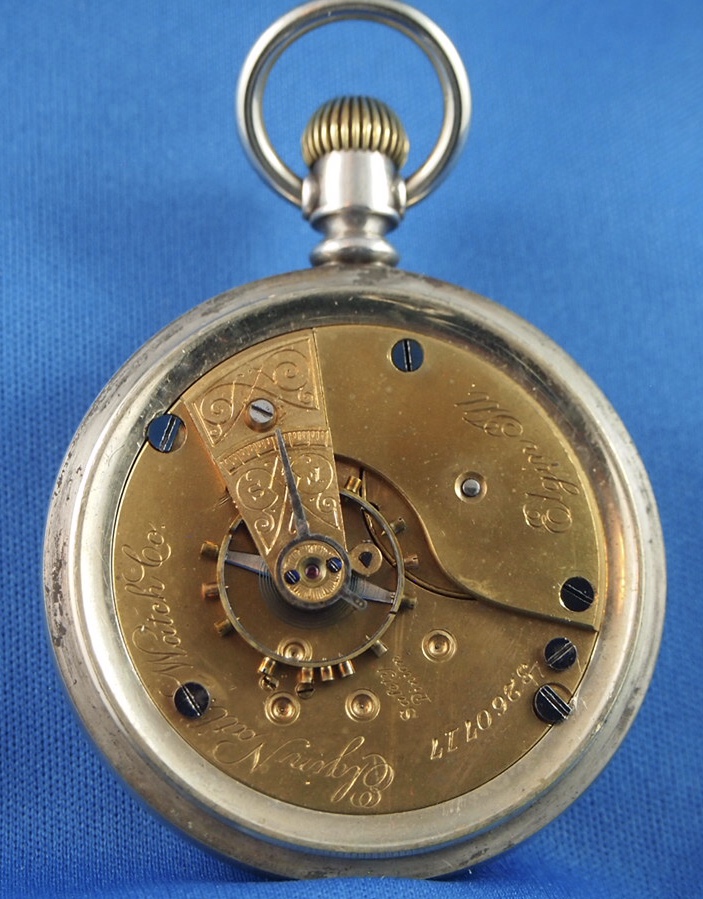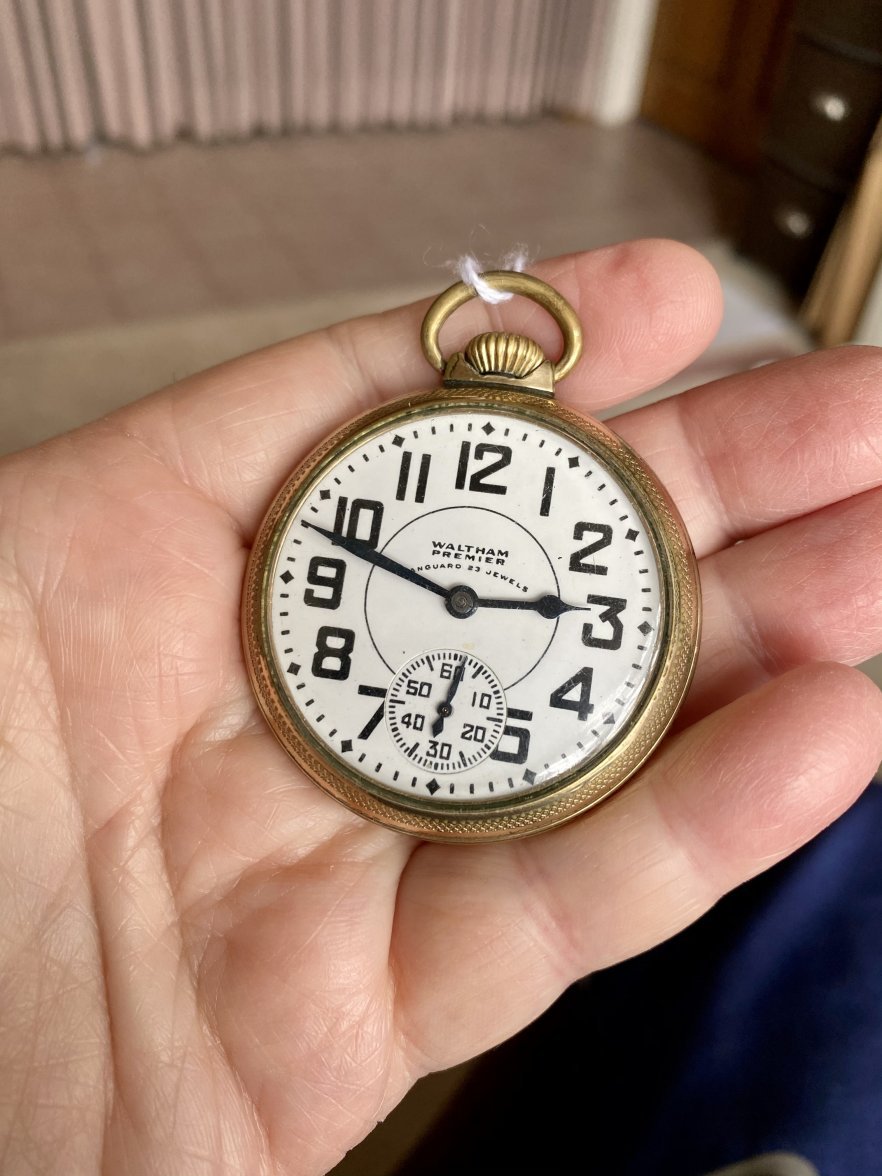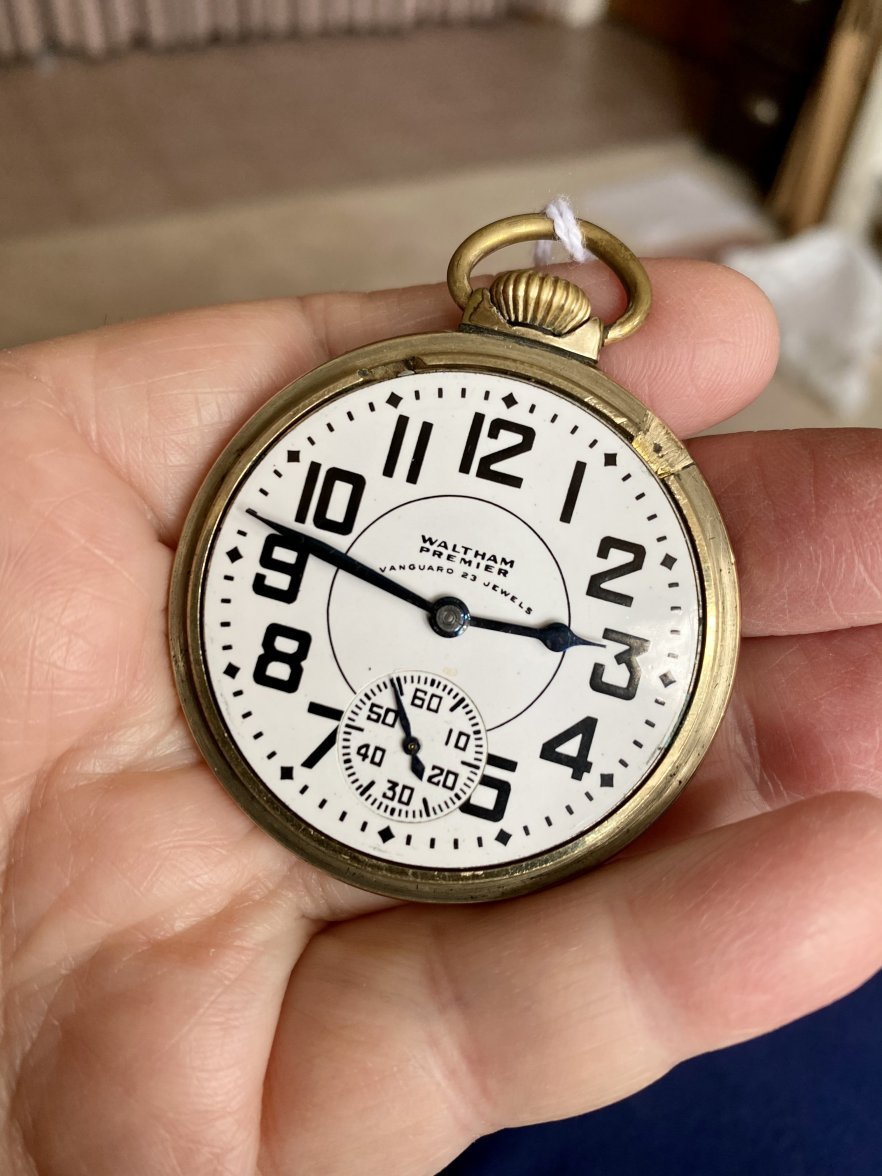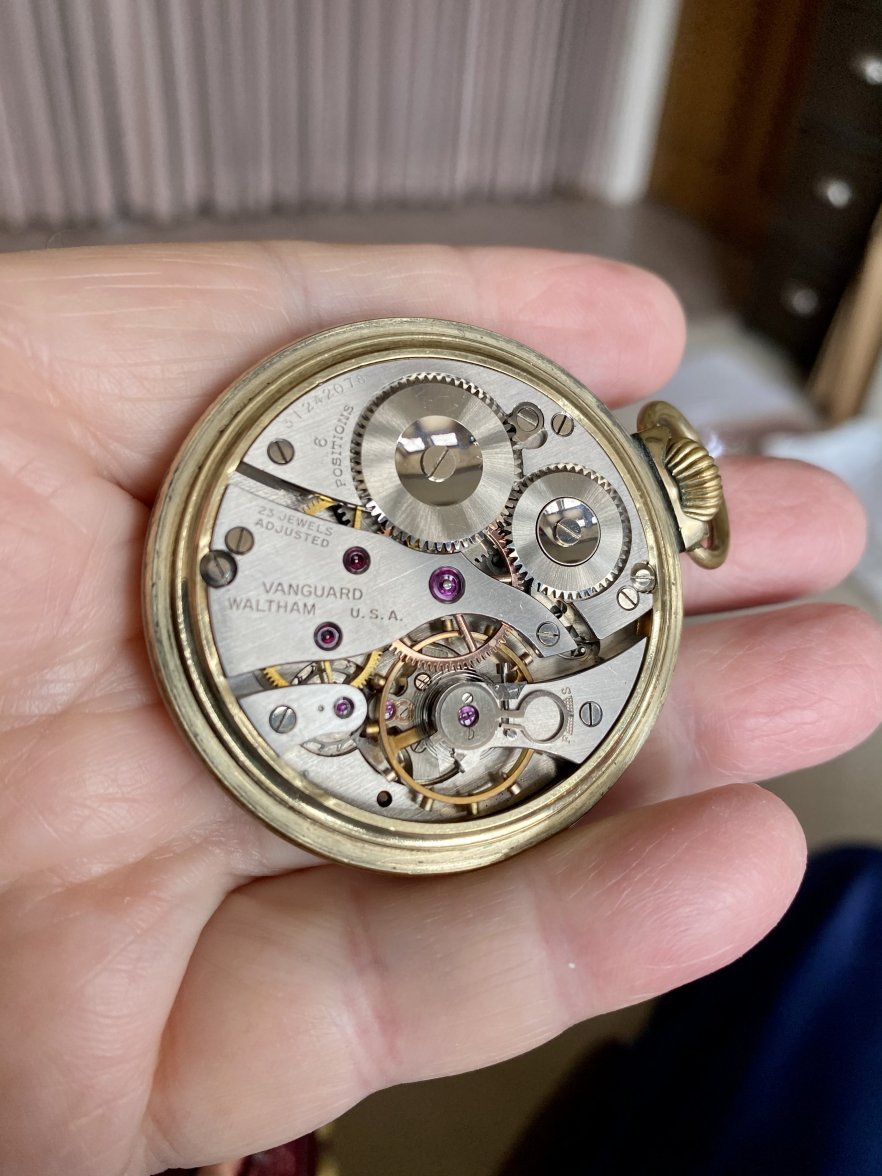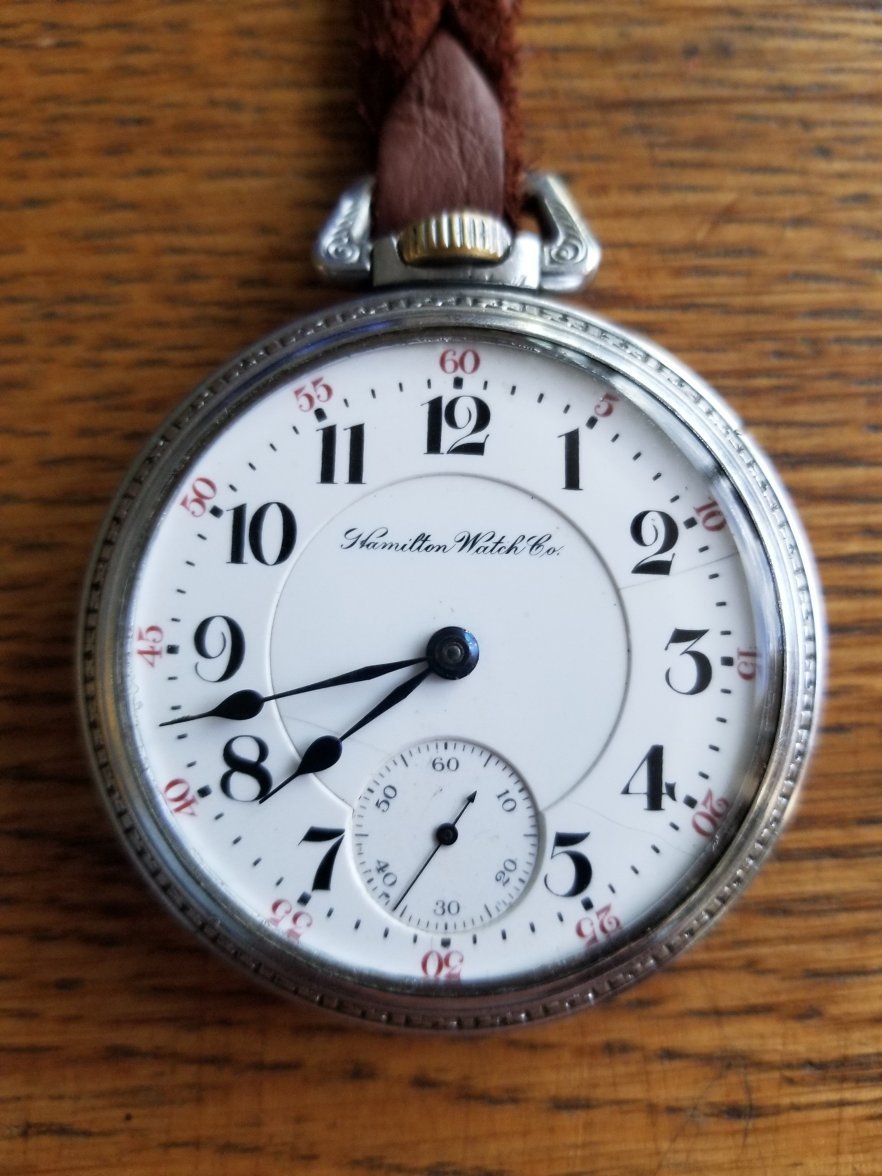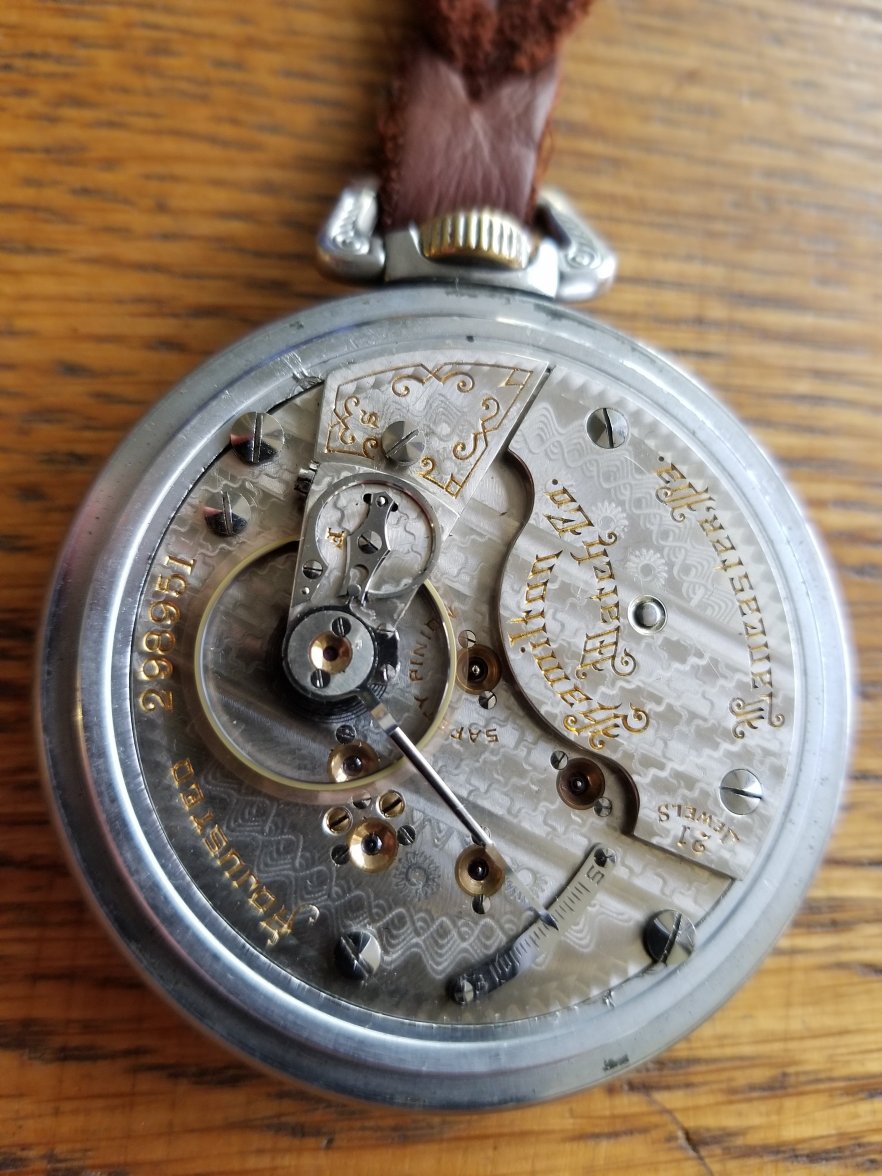Calling all Pocket Watch Buffs
Canuck
·Your Ball Commercial Standard has a mono-metallic balance wheel, and probably also an alloy hairspring. Electric trains came into use circa 1898. By 1931, diesel-electric trains were being used. How pocket watches with steel hairsprings and bi-metallic balance wheels reacted to being used on electric and diesel-electric trains, one can only wonder. After 1931, time service rules often mandated that railroad standard watches for entry level service, had to be non-magnetic. Elgin, Waltham, Hamilton, Illinois (and others) were using alloy hairsprings and alloy balance wheels in order to meet the requirements for non-magnetic watches. Hamilton introduced the 992E (for Elinvar) in 1931. Years ago, I saw a Waltham 1892 model with alloy hairspring, and the Non-Magnetic Watch Co. (1887-1905), used Elgin, Illinois, Peoria, and Swiss non-magnetic movements. Your Ball Commercial Standard watch was likely produced in the mid to late 1960s when the last U S watch manufacturer (Hamilton) was winding down. Thanks for showing it.
140dave
·I shared the back of the case of this watch earlier in the thread but thought I should add the rest. It is the one I dont think I have shown a movement shot of, though maybe over in the Illinois thread.
21 jewel Bunn Special 161 Type IIE (E indicates the Elinvar hairspring)
Made after the Hamilton takeover of the Illinois brand, this is the period where some of the finest American RR watches were produced IMO. Not common, not the rarest model either, but condition, condition, condition. 😁
21 jewel Bunn Special 161 Type IIE (E indicates the Elinvar hairspring)
Made after the Hamilton takeover of the Illinois brand, this is the period where some of the finest American RR watches were produced IMO. Not common, not the rarest model either, but condition, condition, condition. 😁
Canuck
·This fine example shows the patented Elinvar Breguet hairspring and the mono-metallic balance wheel. Later examples of the Hamilton Elinvar and Elinvar Extra models used white alloy hairsprings. Prior to the Hamilton introduction of Elinvar hairsprings, blued steel hairsprings were used. But after the introduction of colourless Elinvar hairsprings, there was skepticism as to whether the colourless (Elinvar) hairspring was up to the job. This watch is an example of an early Elinvar hairspring which was given the blue colouring to overcome skepticism. These artificially coloured hairsprings were later dropped in favour of the natural colour of Elinvar and Elinvar Extra. According to the Meggers & Ehrhardt “blue book”, made circa 1931. A beaut, may I say?
According to the “blue book”, your dial with “21 jewels 60-hour” around the seconds bit was introduced on S# 5481301, which is a bit later than yours. But regardless, it is a premium dial on a premium watch!
According to the “blue book”, your dial with “21 jewels 60-hour” around the seconds bit was introduced on S# 5481301, which is a bit later than yours. But regardless, it is a premium dial on a premium watch!
Edited:
Mad Dog
·I shared the back of the case of this watch earlier in the thread but thought I should add the rest. It is the one I dont think I have shown a movement shot of, though maybe over in the Illinois thread.
21 jewel Bunn Special 161 Type IIE (E indicates the Elinvar hairspring)
Made after the Hamilton takeover of the Illinois brand, this is the period where some of the finest American RR watches were produced IMO. Not common, not the rarest model either, but condition, condition, condition. 😁
🥰🥰🥰
🥰🥰🥰
Canuck
·We’ve had the opportunity to view some very impressive watches in this thread, over time. One submission was from @Duracuir1 in which he showed a pocket watch engraved New England Watch Co., of “Providence, R I !”. I called it a “Swiss fake” in my reply. Why? Well, firstly, the New England Watch Co. was located in Waterbury, Conn. secondly, the New England Watch Co. was part of the Waterbury Watch Co. (and Waterbury Clock Co.), and they only made low end pin lever, duplex escapement models, and some jewelled models. Waterbury eventually was bought out by U S Time.........Timex! But nothing from the New England Watch Co. looked like the subject watch. My post gave rise to a P M from Steve re: fake watches. I described to him the one I am about to show you.
First: this thing has a locomotive on the dial. This has happened on real railroad watches (Dominion Atlantic Railroad Waltham 1883 model, for one), but it is rare for this type of embellishment on a real railroad watch.
Second: Around the seconds bit on the dial are the words “Locomotive Special!”. When pigs fly!
Third: the movement is also marked Locomotive Special, Chicago, Ill. Yeah, right! It is also marked “Adjusted!” Hah!
Fourth: You might be able to count six “cap jewels” over the train wheels. They are celluloid, not ruby, and are only window dressing to attract the unwary who believe in a free lunch! Under these “cap jewels”, there are pivots running in brass bearings! No jewels.
Fifth: The movement is marked “23 jewels!” Yeah, right! There are only 7 jewels! Add the 6 celluloid “cap jewels. There are only 13 “jewels” in the watch, but only 7 real jewels. So, 23 - 13 = 10. Where are the other 10 jewels. They aren’t there. The movement also has locomotive emblazoned on it! Rare on real railroad watches, but it has happened.
Sixth: This watch was put together by the Trenton Watch Co. of Trenton, N J for a Chicago dealer in such trash! Trenton also marketed “cheap” watches, and also became part of U S Time.....Timex!
This watch is not a Swiss fake railroad watch, but an American fake railroad watch! Some people collect such watches. I have only the one, and one is enough for me.
First: this thing has a locomotive on the dial. This has happened on real railroad watches (Dominion Atlantic Railroad Waltham 1883 model, for one), but it is rare for this type of embellishment on a real railroad watch.
Second: Around the seconds bit on the dial are the words “Locomotive Special!”. When pigs fly!
Third: the movement is also marked Locomotive Special, Chicago, Ill. Yeah, right! It is also marked “Adjusted!” Hah!
Fourth: You might be able to count six “cap jewels” over the train wheels. They are celluloid, not ruby, and are only window dressing to attract the unwary who believe in a free lunch! Under these “cap jewels”, there are pivots running in brass bearings! No jewels.
Fifth: The movement is marked “23 jewels!” Yeah, right! There are only 7 jewels! Add the 6 celluloid “cap jewels. There are only 13 “jewels” in the watch, but only 7 real jewels. So, 23 - 13 = 10. Where are the other 10 jewels. They aren’t there. The movement also has locomotive emblazoned on it! Rare on real railroad watches, but it has happened.
Sixth: This watch was put together by the Trenton Watch Co. of Trenton, N J for a Chicago dealer in such trash! Trenton also marketed “cheap” watches, and also became part of U S Time.....Timex!
This watch is not a Swiss fake railroad watch, but an American fake railroad watch! Some people collect such watches. I have only the one, and one is enough for me.
Edited:
JimInOz
··Melbourne AustraliaI read an article by an academic in horology some time ago where she gave a presentation on Swiss fakes of "English" watches.
At the time these fakes were being produced, English made pocket watches were the finest in the world and the fakes played on this by inventing English sounding maker's names to engrave on the bridges.
I'll see if I can track the article down.
Here you go.
At the time these fakes were being produced, English made pocket watches were the finest in the world and the fakes played on this by inventing English sounding maker's names to engrave on the bridges.
I'll see if I can track the article down.
Here you go.
Edited:
Canuck
·On the topic of how railroad watch movements are engraved, in the prior post, I mentioned that real railroad watches are rarely adorned with cutesy pictures of locomotives, etc. Well, it does happen!
This watch is a model 2, grade 4 “Railroader” from the Illinois Watch Co. this one is from circa 1884, so it is quite unlike most of the later railroad watches shown in this thread. This one has only 11 jewels. It is one of 4,500 made, and is the only Illinois Watch to ever have had such engraving on it. But it passed as a railroad watch in 1884! This one is in its original hunter case, and you will notice that the original matching case paper is still there,
The model 2 Illinois 18-size movement is what is known as a “transitional” movement. Look closely, and you will see it is a stem winder that is also equipped so that it can be wound with a key! Transitional, in that this movement could be offered as a key winder, a stem winder, and in either a hunter case, or an open faced case! One movement could be sold 4 different ways!
This watch is a model 2, grade 4 “Railroader” from the Illinois Watch Co. this one is from circa 1884, so it is quite unlike most of the later railroad watches shown in this thread. This one has only 11 jewels. It is one of 4,500 made, and is the only Illinois Watch to ever have had such engraving on it. But it passed as a railroad watch in 1884! This one is in its original hunter case, and you will notice that the original matching case paper is still there,
The model 2 Illinois 18-size movement is what is known as a “transitional” movement. Look closely, and you will see it is a stem winder that is also equipped so that it can be wound with a key! Transitional, in that this movement could be offered as a key winder, a stem winder, and in either a hunter case, or an open faced case! One movement could be sold 4 different ways!
Edited:
Canuck
·Here is a picture of the aforementioned Dominion Atlantic railroad watch by the Waltham Watch Co. It is unusual because, in its day, it was a railroad watch, and it is of a rare type that has a locomotive on the dial. This watch is highly collectible. Each example had a hand painted rendering of a wood-burning locomotive in Limoge enamel, painted free hand, on the dial. No two of these hand painted dials are identical.
Mad Dog
·amcclell
·I once saw a 1.5 oz. bottle of 1958 Glenfarclas for $1,250.00 (Cdn.)! At that price, it had probably been ageing in that liquor store for a long time!
Canuck
·@Mad Dog posted his Breitling pocket chronograph. That brought to mind my only military watch. It is a WWII, 16-size, Elgin grade 582 “jitterbug” timer which is designed to time events of up to 100 seconds duration. This watch “ticks” 30 beats per second! The sweep seconds hand goes around the dial in 10 seconds. Each revolution of the sweep seconds hand, the sub dial hand advances one unit of 10 seconds. I have heard it variously reported as to what it might have been used for. Timing trajectory of heavy artillery shells? Bomb aiming? I use it for calibrating 400-day clocks when I fit a new suspension spring. I can usually time them within a couple minutes per day on the first regulation. It may appear that the watch doesn’t have a balance wheel. But if you look closely in the enlargement, there is a tiny balance wheel that is very stiffly sprung, thereby oscillating at 30 times per second.
Edited:
Waltesefalcon
·Here it is, the pocket watch that truly got me started on collecting watches. I was twelve or thirteen and at an antique store with my grandma (she'd promised me lunch if I'd be her mule for the day). We were walking along and while she was looking at something I spotted this beauty in a display case with the price tag of $25 on it. I was star struck, I'd been carrying the Westclox Pocket Ben my dad had gotten me for Christmas several years earlier but it was suddenly inadequate, I had to have this watch. The guy at the antique store told me it was Civil War vintage which I believed for years until I started learning more about watches. I had the money in my wallet from mowing lawns and after some negotiation I got it for the princely sum of $20. Years ago I decided that it wasn't accurate enough to carry anymore so it's sat neglected in a drawer for the past twenty years or so.
It's an 1885 Elgin 7J model 4 grade 28 Dexter St. in a triple hinged coin silver case. It has one of those lovely, thick crystals, and a little tasteful engraving on the back.
It's an 1885 Elgin 7J model 4 grade 28 Dexter St. in a triple hinged coin silver case. It has one of those lovely, thick crystals, and a little tasteful engraving on the back.
Canuck
·The “skinny” on the Dexter Street Elgin. The data base calls it a 10-size which would be a good size for a lad in his early teens. Civil War? Hardly, but still, it is 135 years old, so a worthy part of a watch collection. Coin silver (in the
U S as I understand it), is .900 fine. And the case back would have been engraved by hand, not stamped, the way it would be today. Nothing to be ashamed of, in my view.
https://pocketwatchdatabase.com/search/result/elgin/1681940
U S as I understand it), is .900 fine. And the case back would have been engraved by hand, not stamped, the way it would be today. Nothing to be ashamed of, in my view.
https://pocketwatchdatabase.com/search/result/elgin/1681940
Edited:
Canuck
·I also have a 7-jewel Elgin pocket watch which I cherish. It is a grade 73, class 11, 18-size model in a coin silver case. One of 659,000 built over 117 runs. So it is not rare! The table I referred to indicates that it was made circa 1888-89. Could be. My late father always indicated that it had belonged to his late father (my grand father) who died in 1908. He emigrated from Scotland at about the time this watch was made. The case back has a rose gold image of a steam locomotive inlaid in it. It is very heavily worn. If my grandfather had acquired it circa 1890, I very much doubt the case back would appear to be so heavily worn by the time of his death in 1908. So the watch may also have been used by my grandmother’s second husband whom she married in 1916. So I’ll call it my paternal grandfather’s watch because that is what I was told.
TexOmega
·Canuck
·This Waltham is an example of a non-magnetic railroad watch. This one was made at about the time that Hamilton introduced the 992B. This Waltham has a mono-metallic balance wheel with a solid rim, and an alloy hairspring. IIRC, the copyrighted name that Waltham used for their non-magnetic alloy hairsprings was “Conium”. If I am incorrect, I would be glad to be informed. Hamilton had Elinvar and Elinvar Extra, and Elgin had “Elginium”. These alloys were not affected by magnetism, and the effects of temperature change were much reduced as compared to earlier steel hairsprings. So bi-metallic, split rim, temperature compensating balance wheels as used with steel hairsprings, were no longer necessary when this watch was made. As to how these alloys differed as used by these companies, I don’t know. These later railroad grade pocket watches are much less ornate than earlier models, but they are every bit as capable of performing to railroad standards. Thanks for posting.
Canuck
·Did you know? In 1886, Henry Ford had aspirations to become a watch manufacturer? His initial attempt was very small, but he was able to manufacture what might be called “entry level” (cheap) watches. For a more complete report, Google Henry Ford-watchmaker.
Here is another story about accidental success arising out of marketing watches. Many have read about this chap, but for some, you might be interested in the story you can read by clicking on the link.
https://schoolworkhelper.net/richard-warren-sears-biography-sears-roebuck-company/
Here is another story about accidental success arising out of marketing watches. Many have read about this chap, but for some, you might be interested in the story you can read by clicking on the link.
https://schoolworkhelper.net/richard-warren-sears-biography-sears-roebuck-company/
Edited:
DaveK
·Amazon Prime has a documentary on Henry Ford https://app.primevideo.com/detail?g...59c76&territory=CA&ref_=share_ios_movie&r=web
Waltesefalcon
·For today's offering I'm wearing my 1904 Hamilton 940. It's wearing a pretty ubiquitous and utilitarian Keystone base metal case, and if you'll look near the bridge you can see that this movement has been recased because you can see where an earlier movement's dog screw has dug into the case a bit. I wonder what happened to the original case.
This is one of my best time keepers running at around +12 seconds a week. I also really like this watch because the damaskeen pattern on this movement one of my favorites among my watches.
This 940 is one that was produced back when the 940 was a single roller movement. After 940s started being produced with double rollers (around 1906 I believe) the slightly higher grade 942 went by the wayside. The only real difference between the two grades had been that the 940 was a SR movement and the 942 DR movement, so after the 940 gained a double roller there was no reason to keep both movements in the catalog.
This is one of my best time keepers running at around +12 seconds a week. I also really like this watch because the damaskeen pattern on this movement one of my favorites among my watches.
This 940 is one that was produced back when the 940 was a single roller movement. After 940s started being produced with double rollers (around 1906 I believe) the slightly higher grade 942 went by the wayside. The only real difference between the two grades had been that the 940 was a SR movement and the 942 DR movement, so after the 940 gained a double roller there was no reason to keep both movements in the catalog.
